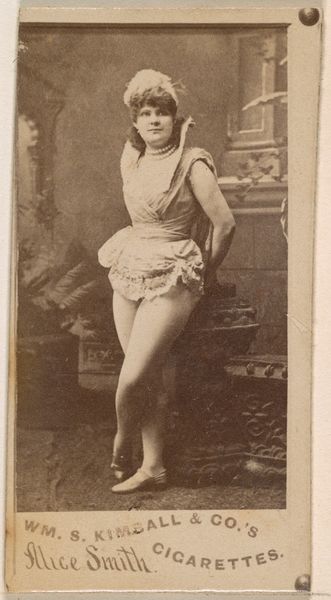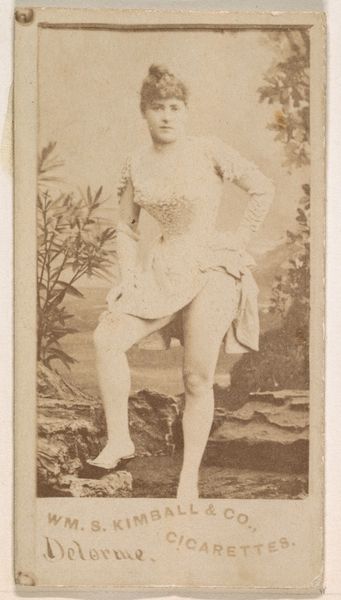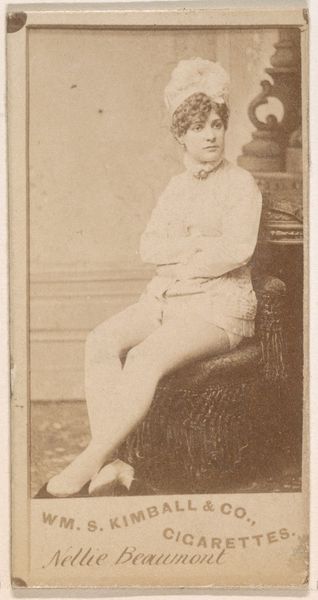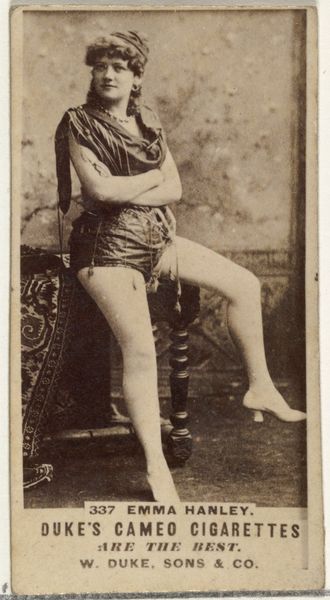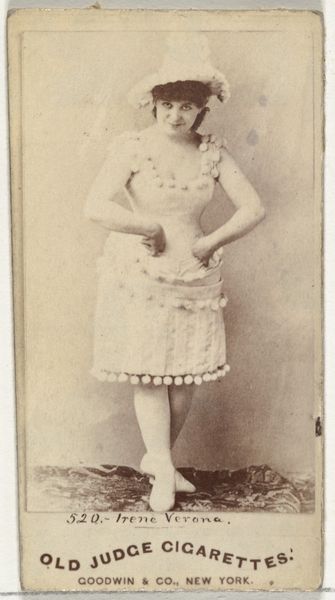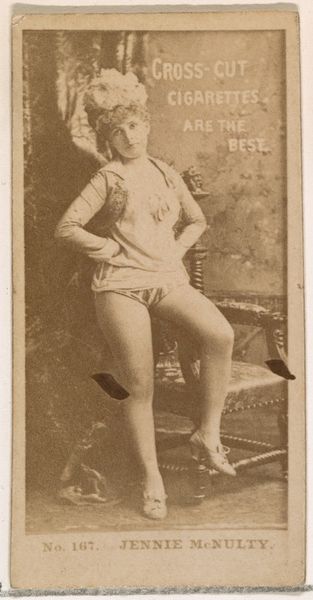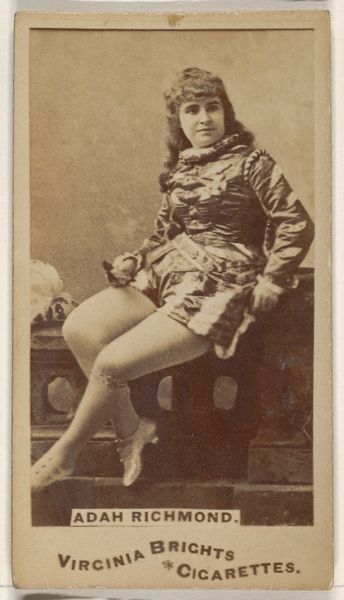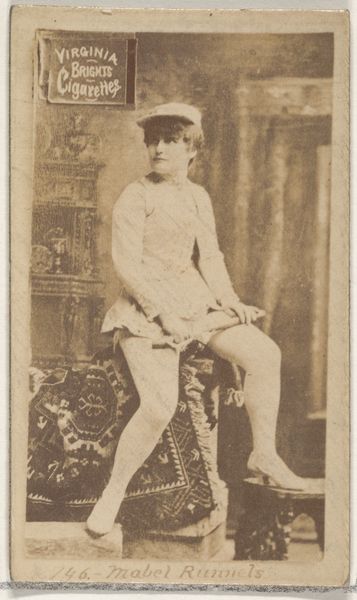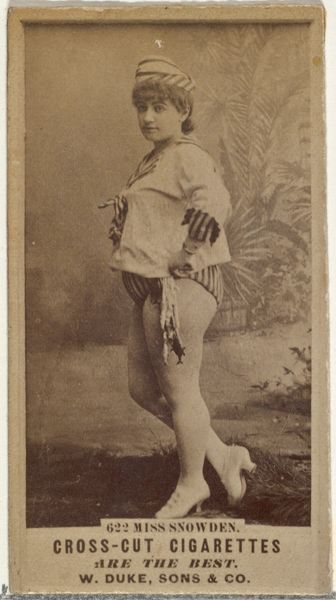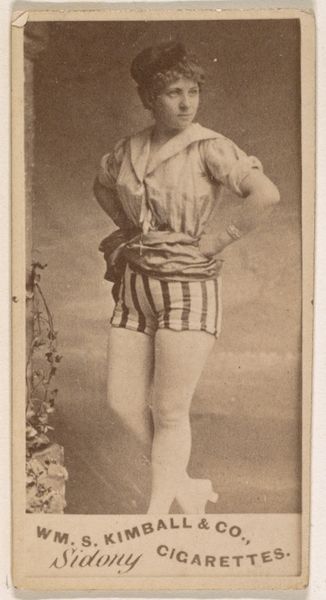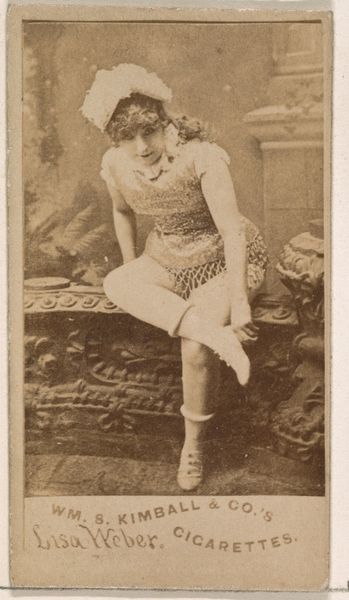
Kate Uart, from the Actors and Actresses series (N45, Type 1) for Virginia Brights Cigarettes 1885 - 1891
0:00
0:00
print, photography
#
portrait
# print
#
photography
Dimensions: Sheet: 2 3/4 x 1 3/8 in. (7 x 3.5 cm)
Copyright: Public Domain
Editor: This is "Kate Uart, from the Actors and Actresses series (N45, Type 1) for Virginia Brights Cigarettes," made between 1885 and 1891 by Allen & Ginter. It looks like a photograph, a sepia-toned portrait. What's interesting is that it's advertising cigarettes. What catches your eye in this image? Curator: For me, it's the intersection of commerce, leisure, and representation. These cards weren't conceived as 'high art', but they served a specific purpose in the burgeoning consumer culture. Notice the materiality of the card itself - the paper stock, the printing process, the mass production. This relates directly to the labor involved and the accessibility of these images. Consider also the societal role of women and the commodification of the acting profession; she is literally being sold along with the cigarettes. Do you notice the influences of Japonisme within this image? Editor: Now that you mention it, I see that flatness in the background, also the way the figure seems posed. But is it still 'art' if it's just trying to sell something? Curator: Precisely. This challenges our understanding of where art resides. By considering the production and consumption of this object, we acknowledge that artistic intention doesn't necessarily elevate something to art. Instead, this piece exposes art as entangled with the forces of labor and the marketplace, challenging notions of the separation of the "high" and the "low." The materials and their manipulation tell a complex story beyond the surface image. Editor: That makes so much sense. It's about seeing how art is *made* and *used*, not just admiring it from afar. Thanks, this really shifts how I look at things. Curator: It shifts all of our perceptions. Recognizing the economic, material, and labor systems surrounding art creates opportunities to see past common assumptions and consider different points of view.
Comments
No comments
Be the first to comment and join the conversation on the ultimate creative platform.
